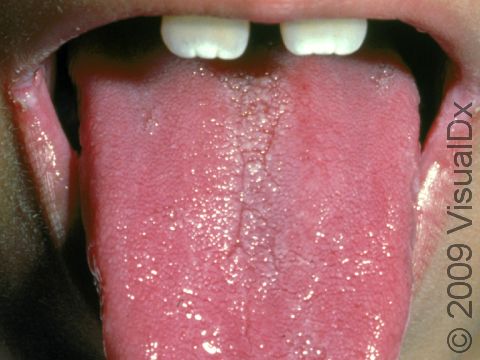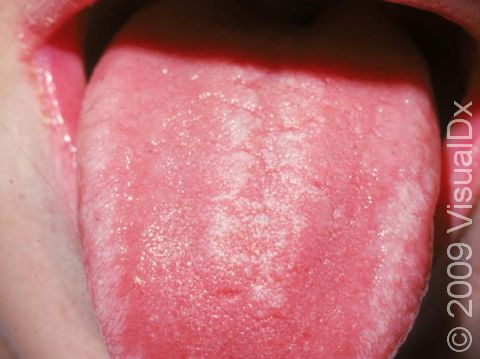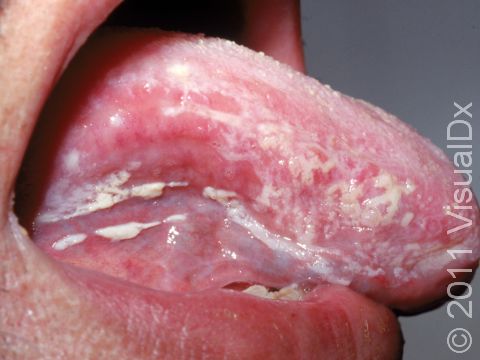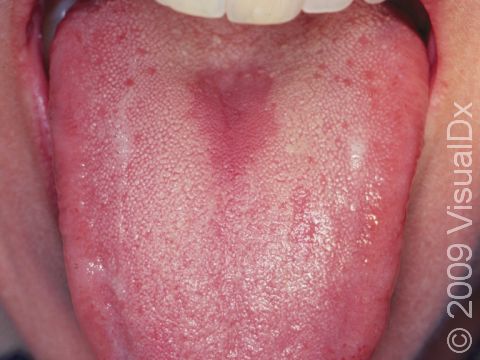Thrush (Oral Candidiasis)
Oral candidiasis, commonly known as thrush, is a yeast infection of the mouth or throat. It is usually caused by the yeast Candida albicans. It often appears as white patches on top of reddened skin on the tongue, inner lips, or inner cheeks. Breast-feeding mothers often get a similar rash on their nipples if their baby has thrush.
Who's At Risk?
Thrush is most commonly seen in infants. If a teen or adult gets thrush, it is usually because he or she is taking certain medications, such as antibiotics or inhaled steroids, undergoing chemotherapy, or has a problems with his or her immune system, such as from HIV.
Signs & Symptoms
Thrush may appear as white or pale yellow spots on the inner surfaces of the mouth and throat, the tongue, and the lips. It may resemble cottage cheese or milk curds. However, scraping off these membranes may be difficult and may leave slightly bleeding sores.
Thrush may be associated with a burning sensation in the mouth or throat.
Self-Care Guidelines
Thrush may make eating and drinking uncomfortable, and people with this condition may become dehydrated. It is important to maintain good nutrition and hydration while infected with thrush.
Thrush needs medications prescribed by a health care practitioner.
Treatments
Although meticulous oral hygiene practices must be followed, treatments center on killing the overgrown yeast with anti-fungal medications.
- Nystatin – This medicine must come into contact with the yeast in order to kill it. Nystatin comes in a liquid (suspension) and in a lozenge (troche). The suspension is swished around the mouth and then swallowed. The lozenge dissolves in the mouth. Both the suspension and the lozenge are used several times a day until the lesions are completely gone.
- Amphotericin B suspension – The suspension is swished and swallowed several times a day until complete resolution of the lesions.
- Clotrimazole lozenge – The lozenge is dissolved in the mouth several times a day until the lesions have disappeared entirely.
- Fluconazole pill – This medication is swallowed once daily for 5–10 days.
Visit Urgency
Thrush requires prescription medication after a visit to the physician. People with an immune system deficiency need even prompter and more aggressive treatment to make certain that the yeast does not enter their bloodstream or infect other organs. If the white or yellow membranes of thrush are accompanied by fever, chills, vomiting, or generalized illness, more immediate medical attention is warranted.
References
Bolognia, Jean L., ed. Dermatology, pp.837, 1095, 1096, 1185. New York: Mosby, 2003.
Freedberg, Irwin M., ed. Fitzpatrick’s Dermatology in General Medicine. 6th ed, pp. 2013. New York: McGraw-Hill, 2003.
Last modified on August 16th, 2022 at 2:44 pm

Not sure what to look for?
Try our new Rash and Skin Condition Finder




